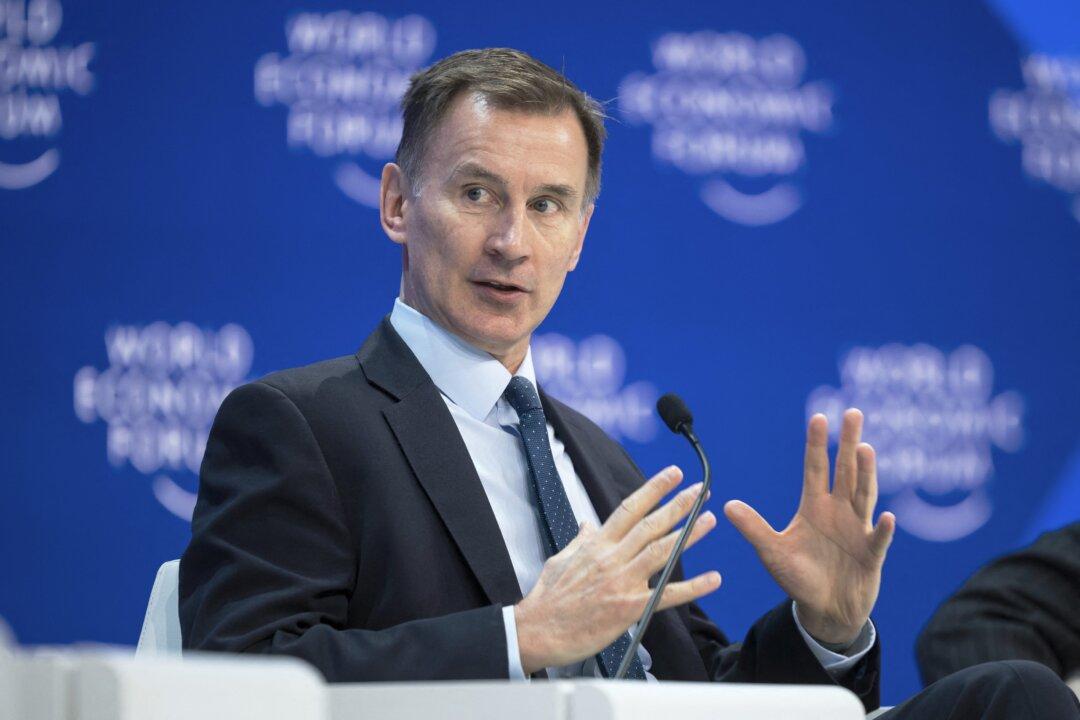While current economic growth figures fit the definition of a technical recession, economists have described it as mild and predicted growth in 2024.
The UK has entered a technical recession, after GDP decreased for two consecutive quarters in 2023.
The estimates, published by the
Office of National Statistics on Thursday, showed a fall of GDP by 0.3 percent in October to December 2023. This follows a fall of 0.1 percent in the three months to September.
Among the sectors driving the GDP growth down in the last quarter of 2023 were services, production, and construction output that saw declines of 0.2, 1.0, and 1.3 percent respectively.
Across the whole year, though, both services and construction grew by 0.3 and 2.0 percent, respectively. Production, however, saw a fall in output of 0.3 percent.
Commenting on the latest GDP figures, Chancellor Jeremy Hunt said that low growth was “not a surprise,” given the high interest rates set by the Bank of England (BoE) in an attempt to bring down inflation.
‘Rigid’ Definition
The ONS has cautioned against “rigid” views on what constitutes a recession. A widely recognised definition of a
technical recession describes a period of two or more consecutive quarters of contracting output.
“If an economy shrinks by 0.1 percent for two quarters running, but in the quarters either side grows strongly, is this really a recession or perhaps just a lack of GDP growth for particular one-off reasons?” said Darren Morgan, the ONS director of economic statistics, in a
2022 blog post.
There have been five technical recessions over the last 50 years, with the latest one striking the UK economy in 2020, when growth dropped, reacting to COVID-19 pandemic lockdowns.
The impact of the pandemic and geopolitical tensions, including the war in Ukraine, sent the UK economy plunging. The government reacted by boosting the UK’s money supply, a measure that
Mr. Hunt admitted had contributed to the inflation crisis.
While the Treasury has focused on lowering the stubbornly high inflation rate in the past two years, it struggled to boost GDP growth.
“We always expected the growth to be weaker while we prioritise tackling inflation. That means higher interest rates. And that’s the right thing to do because you can’t have a long-term healthy growth with high inflation,” the chancellor added.
Economists at
Capital Economics described the current recession to be “as mild as they come,” with indications that it’s already nearing an end.
According to the Centre for Economics and Business Research, recessionary pressures are not expected to persist into 2024 and growth is expected to be stronger than last year.
“The underlying picture here is an economy that is more resilient than most people predicted, inflation is coming down,
real wages have been going up now for six months,” said Mr. Hunt.
When compared to
G-7 economies, the UK’s latest GDP growth—compared to its pre-pandemic level of last quarter of 2019—was only higher than Germany’s. The UK economy is 1 percent above its pre-pandemic level, which compares to 3 percent for the eurozone and 8.2 percent for the United States.
Political Cost
Labour leader Sir Keir Starmer reacted to the ONS figures by criticising the government.
“Britain is hit by a recession and it’s working people who will pay the price,” he said on X, formerly known as Twitter.
The opposition leader called for “change” and said that “only Labour will deliver it.”
His comments, like the latest economic data, come on the day of two by-elections taking place in England. Voters in Kingswood and Wellingborough take to the polls to decide who will replace former Conservative MPs
Chris Skidmore and
Peter Bone.
Ruth Gregory at Capital Economics said the news of a technical recession “will be a blow for the prime minister on a day when he faces the prospect of losing two by-elections.”
However, given
recent projections by the BoE of inflation slowing in the first half of this year, the Conservatives could still gain economic momentum before the general election.







